Australia’s mainstream media continues to run propaganda claiming the collapse in temporary migrant numbers will decimate the Australian economy.
The latest example comes from 7News Sydney, which has featured the usual spruikers, like Abul Rizvi, claiming that any sharp decline in immigration would hurt the “property, retail and hospitality sectors, as well as education and tourism, making a recession inevitable”:
Abul Rizvi continues to argue that taxpayers should pay temporary migrants tens-of-billions of dollars in JobSeeker and JobKeeper allowances in order to stop them from leaving. He also contradictorily argues that large scale migration is required to pay back the huge government debts incurred by the COVID-19 stimulus, which would obviously be much higher if one million-plus temporary migrants were given welfare.
Now let me present the counter point – something you will never read in the mainstream media – on why much lower immigration would be good for the Australian economy.
1) Lower immigration would put a floor under the jobs market and wages:
Australia is facing mass unemployment. According to Roy Morgan’s latest estimate, Australian unemployment rocketed in the second half of March to nearly 17%:
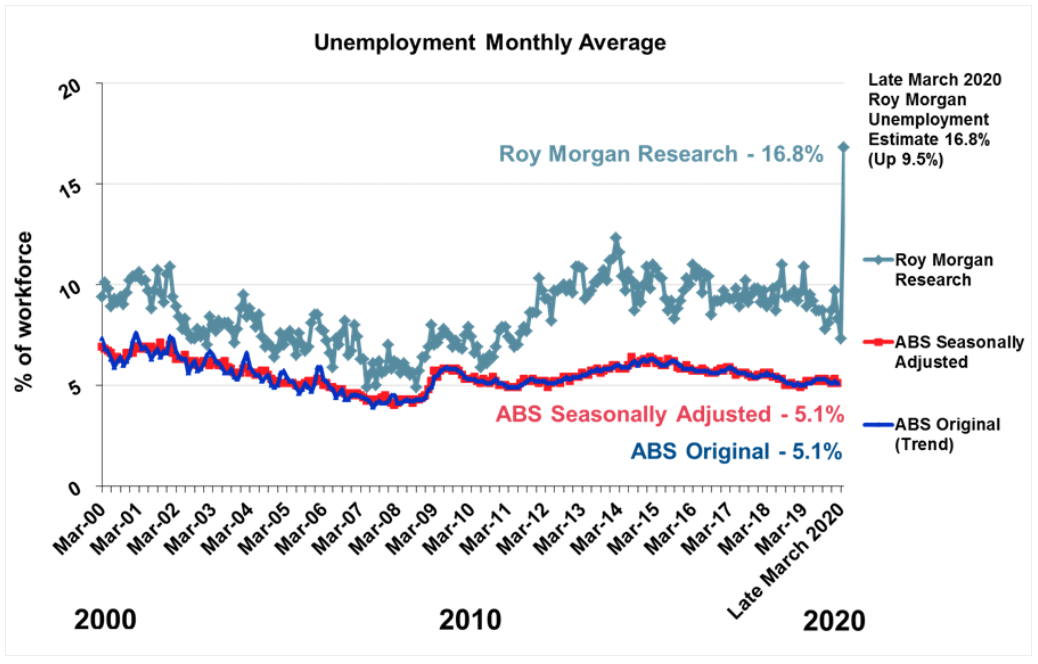
The Grattan Institute has also forecast that Australia’s labour market is facing its biggest downturn since the Great Depression, with up to 3.4 million Australians set to lose their jobs:
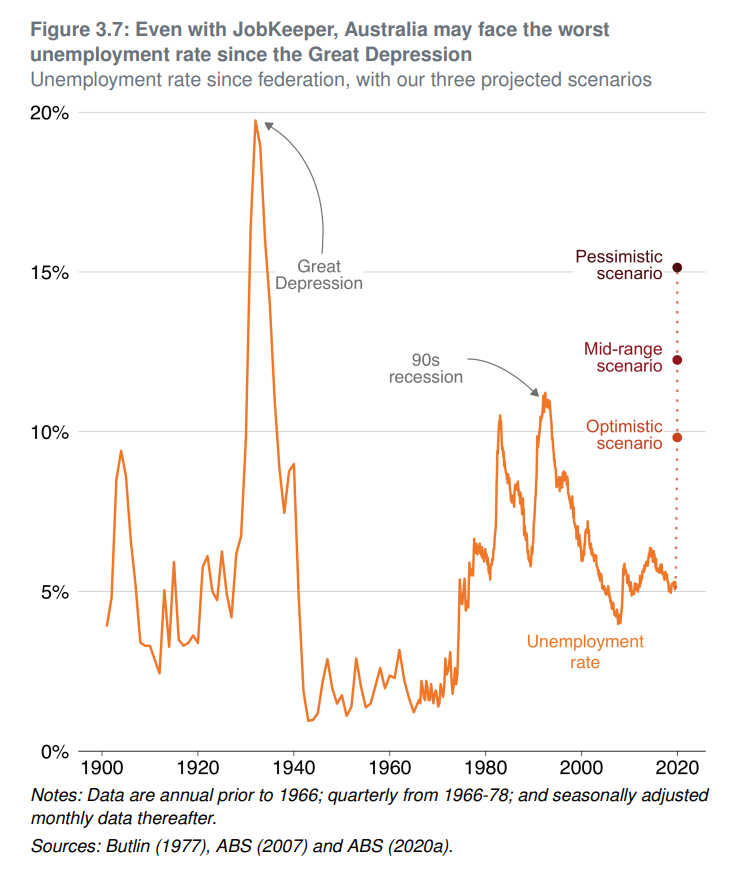
The absolute last thing unemployed Australian workers need is to be competing for scarce jobs with millions of temporary migrants. This would only lengthen the unemployment queues and put downward pressure on wages.
Far better to let temporary migrants leave, as projected, thereby reducing job competition:
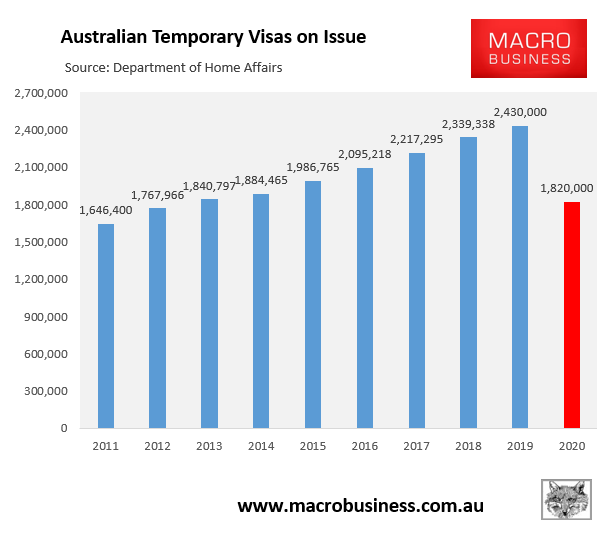
2) Lower immigration would allow Australia to catch-up on infrastructure:
Over the past 15 years of extreme immigration (see next chart), Australia has accumulated massive infrastructure deficits across roads, public transport, water supplies, schools and hospitals.
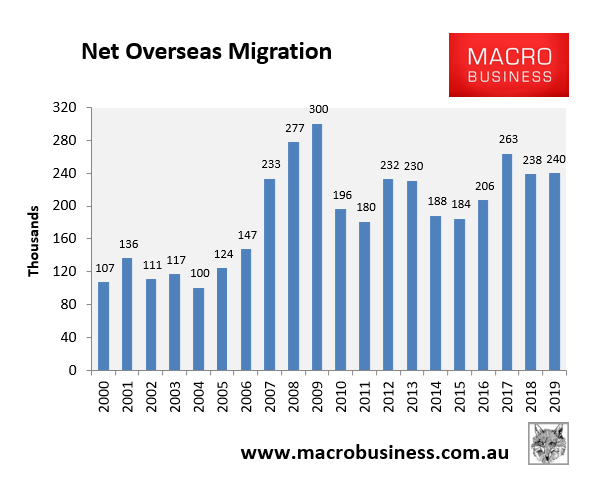
Lower immigration, combined with stimulus spending on new infrastructure, provides a unique opportunity to catch up on this infrastructure shortfall.
The alternative is to let immigration rip and see infrastructure shortfalls get worse and living standards collapse. This is exactly what was forecast by Infrastructure Australia in 2018, when it projected worse traffic congestion and commute times, as well as reduced access to schools, hospitals, jobs and open space as Sydney’s and Melbourne’s populations balloon to a projected 7.4 million and 7.3 million people respectively by 2046:
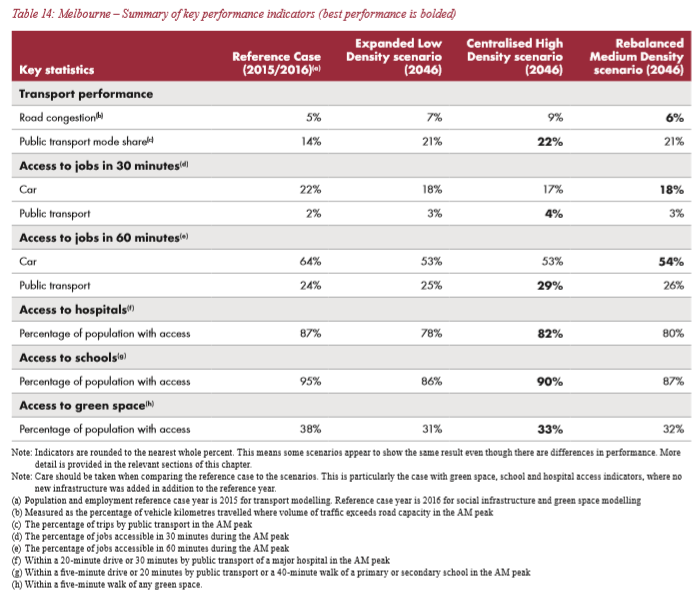
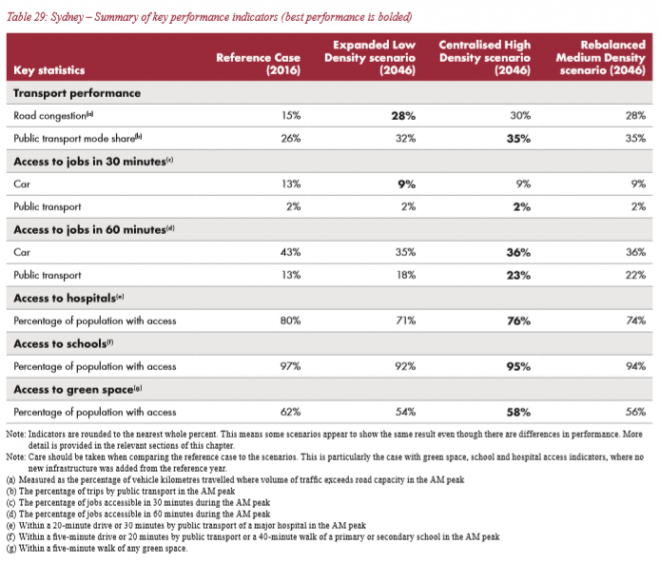
3) Lower immigration would improve housing affordability:
Australia’s extreme house prices – especially in the migrant hotspots of Sydney and Melbourne – has locked out nearly an entire generation from ever owning a home and has consigned the rest to a lifetime of mortgage slavery.
Removing one of the key demand drivers – population growth – would obviously improve the housing affordability situation. It would also mean fewer people being forced to live in shoe box apartments.
4) Lower immigration changes growth, it does not destroy it:
These are the three major reasons why Australia needs lower immigration and they add up to a fourth.
For too long, Australia’s economy has relied on importing hundreds of thousands of people every year to work in non-tradeable services industries, alongside increasing household debt. Together, these have driven consumption and malinvestment into property and catch-up infrastructure, rather than productivity, which has ultimately eroded living standards.
Moreover, adding roughly one million people every 2.5 years has necessarily diluted Australia’s fixed mineral base, thus diluting wealth per capita and making us individually poorer than we otherwise would have been.
The COVID-19 pandemic is a perfect opportunity to reset immigration back to early-2000 levels and create a more sustainable Australia built on growth in both productivity and individual living standards.
Lower immigration will lower the Australian dollar and input costs such that Australia grows more by creating and exporting goods and services rather than importing people.
It changes growth drivers, it does not eliminate them.

